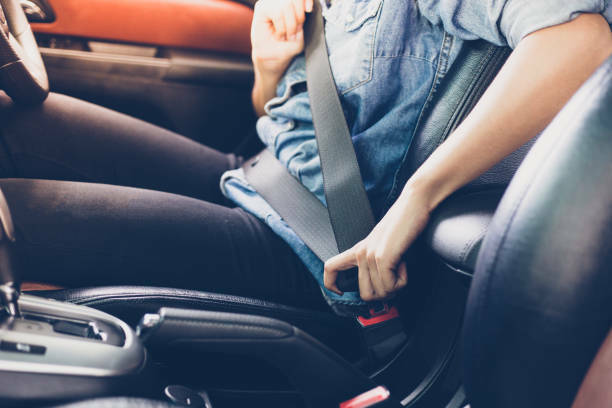Checking your car is important every so often, especially before long car journeys. You can make numerous checks, which have been summarised by Highways England here. You must check the tyre tread, pressure, fuel, oil, screen wash and lights. We have summarised how to check each one below.
Tyre Tread
All tyre treads must have a minimum tread depth of 1.6mm. The tread is the rubber ridges that sit outside the tyre and match contact with the road. These ridges must be a certain depth to protect the tyre and prevent blistering or punctures. The best way to check tread depth is to place a 20p coin into the grooves of the tread; if you can’t see the outer edge of the coin, then the tyres’ tread depth is adequate. It is recommended to check all the tyres this way and observe for any cuts and slow punctures on the tyre wall.
Tyre Pressure
This is most important for long journeys where more significant loads will be placed on your tyres than usual. You can check tyre pressure at most fuel and service stations with an air machine; these are usually located past the pumps. Each car has different recommended tyre pressures, and you can check yours on the inside of the driver’s door, petrol cap, or vehicle manual. You then programme the air machine to the psi that is required for your tyres, unscrew the valves on the tyres and attach the tube. You will likely hear a hiss, and the machine will proceed to inflate the tyres to the set psi level.
Fuel
This is perhaps the most obvious car check to make, ensuring you have enough fuel for your journey. If you travel a long distance and carry significant weight, you will likely burn through fuel quicker, so we recommend filling your tank before a long journey.
Oil
Again check the oil level before long journeys. Ensure your engine is switched off for at least five minutes and your vehicle is parked on an even surface. You then open the bonnet and locate the dipstick using the vehicle manual. Then pull the dipstick out all the way and wipe it clean with a paper towel to remove the oil residue. The dipstick is marked near the bottom in two places to indicate the minimum and maximum oil levels. Reinsert the dipstick fully into the engine, then slowly pull it out again to check the level. The oil residue on the dipstick should be between the minimum and maximum markings. If the oil residue is below the minimum marking, you must top up your oil level. Refer to your vehicle manual for the recommended grade of oil to purchase.
Screen Wash
This is important for visibility, so you should keep the screen wash topped up. Do this by opening the bonnet and finding your screen wash reservoir, which usually shows a screen wash symbol. Fill this with a mixture of wash and screen wash, using the instructions on the bottle of wash you are using.
Lights
All lights, from hazards to headlights, must be functioning; failure in any of these puts you and others at risk on the road. Park your lights by parking the car near a reflective surface and trying each light. You could use the help of a friend, especially for the rear lights such as brake lights.
All these tests are essential, especially if you have just purchased the car. These checks can be completed in under an hour and carry significance for a lot longer into the future. If you want to purchase a car on finance, contact us today and see how we can help!
